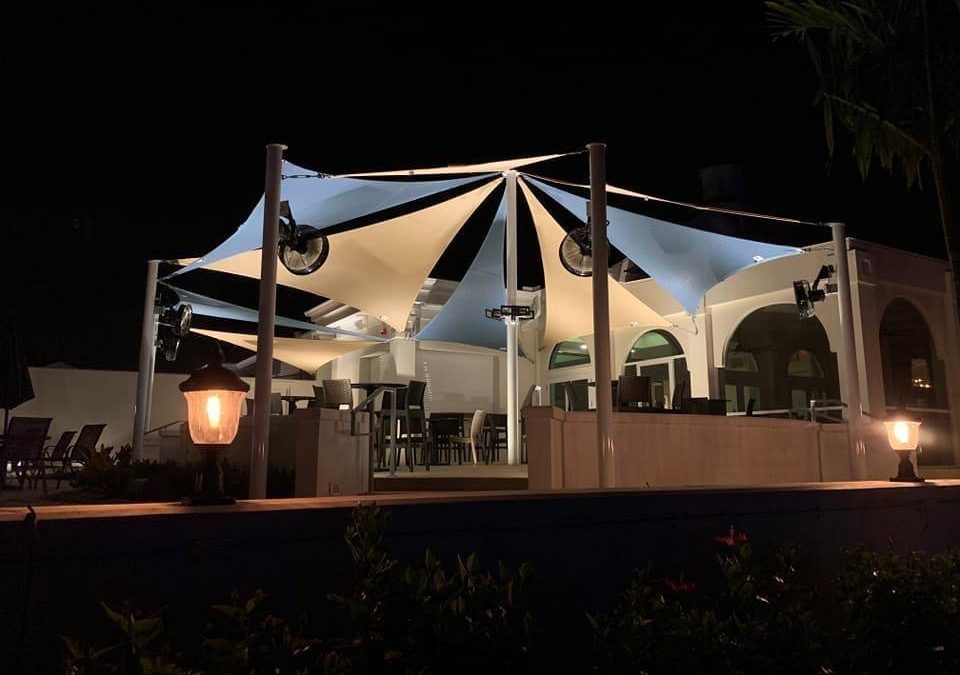A properly installed, good-quality shade sail will be able to withstand high winds. Shade sails are designed to form a tensioned structure; under tension, the sail adopts a relatively solid shape and should not flap in the wind or create too much wind resistance.
Shade Sails are designed to be installed as fully tensioned structures – the amount of tension required depends on the size of the sail and the degree of wind exposure. Larger sails and windy locations will require higher tension.
Some shade sails can be custom-made to withstand being installed in high wind speed. If you’re in an area where high winds are common, consider getting custom shade sails made for high wind areas. These shade sails will let the wind through, which means they will remain sturdy through most storms.
Safety first – Mounting points must be carefully chosen; some potential mounting points may be suitable for resisting the tension forces.
It is important to bear in mind that any wind force will be transmitted by the sail to the mountings, so the fittings and attachment points need to be very secure. Even though our shade sails are tough, we cannot say the same for every customer’s anchor points.
Another reason why your shade sails might become damaged during a storm is poor-quality materials. If they were poorly stitched or the materials were cheaply made, they might tear away much easier than high-quality shade sails. Always choose high-quality shade sails and proper installation.
Ultimately – Sails generally are designed to withstand up to 85 mph winds. So, under normal weather conditions, you don’t need to worry about it, but they can be damaged by exceptionally strong winds. As such, we’d recommend taking your shade sail down if there’s a storm coming.

